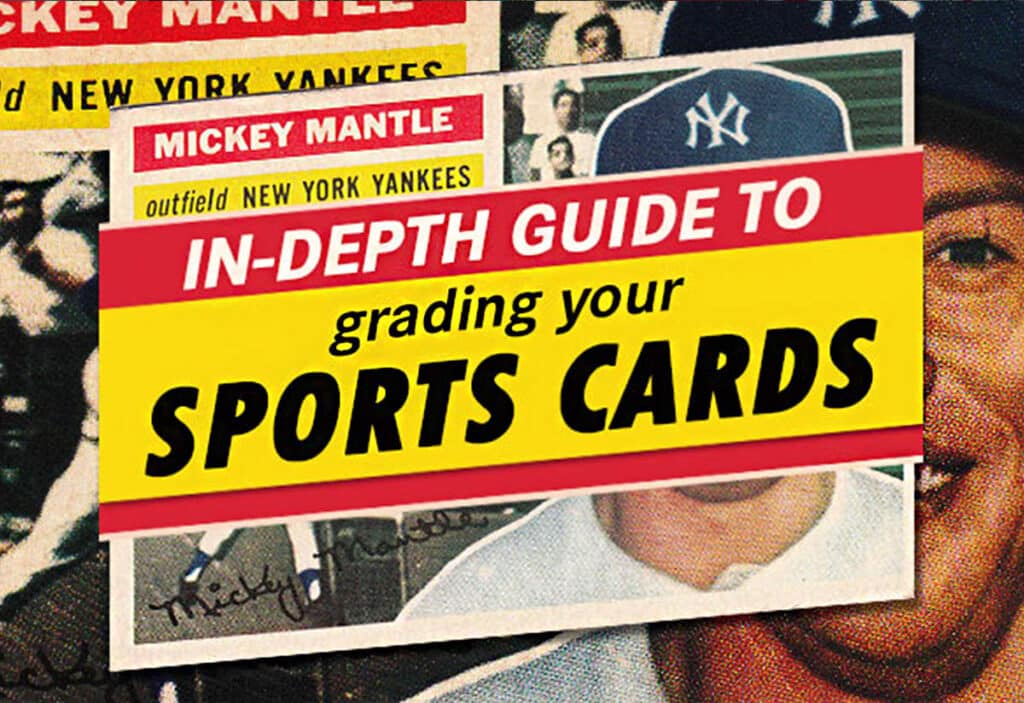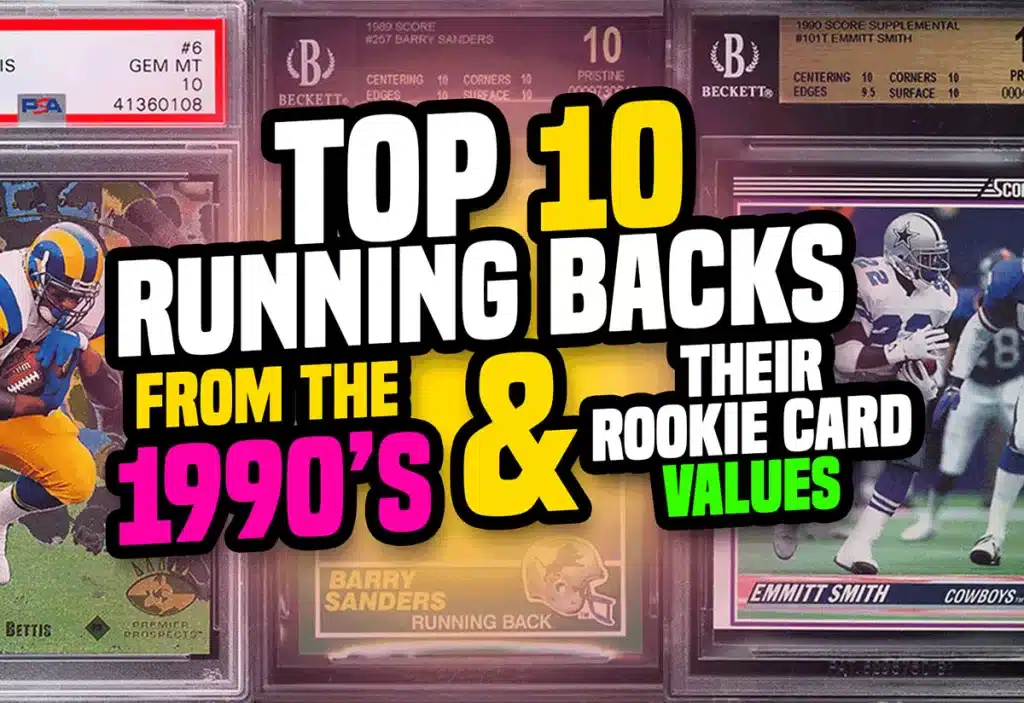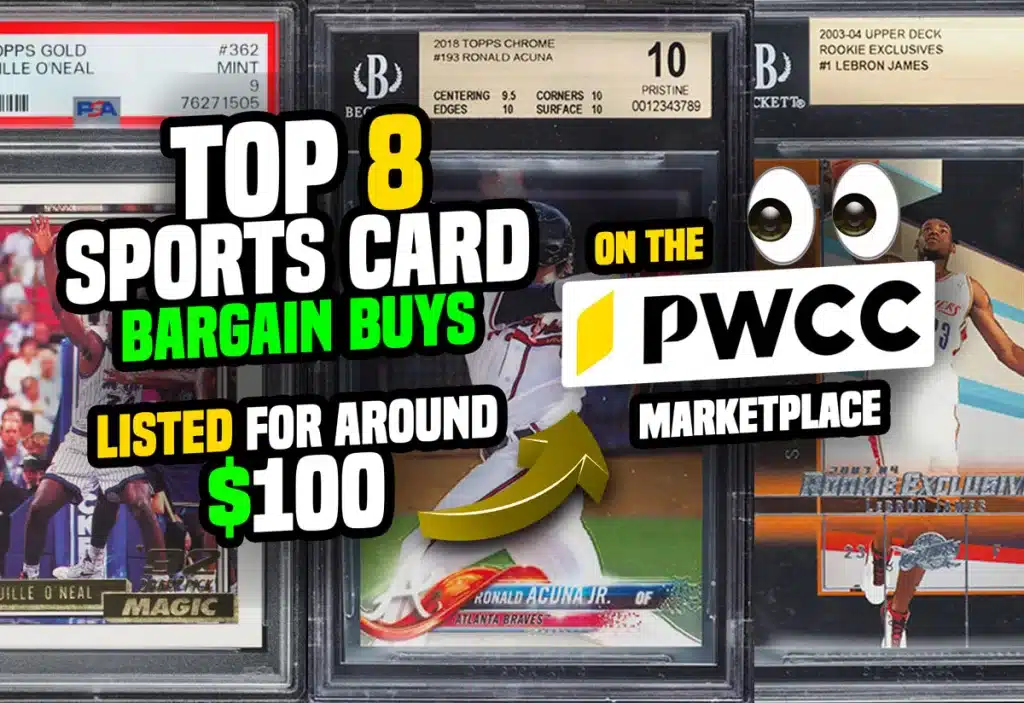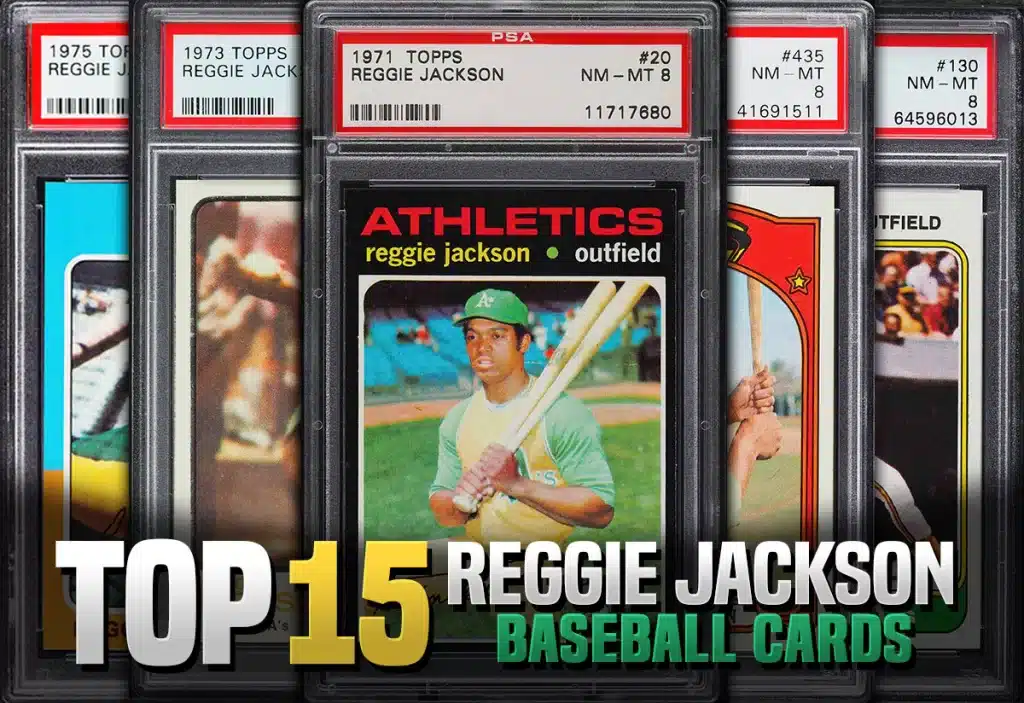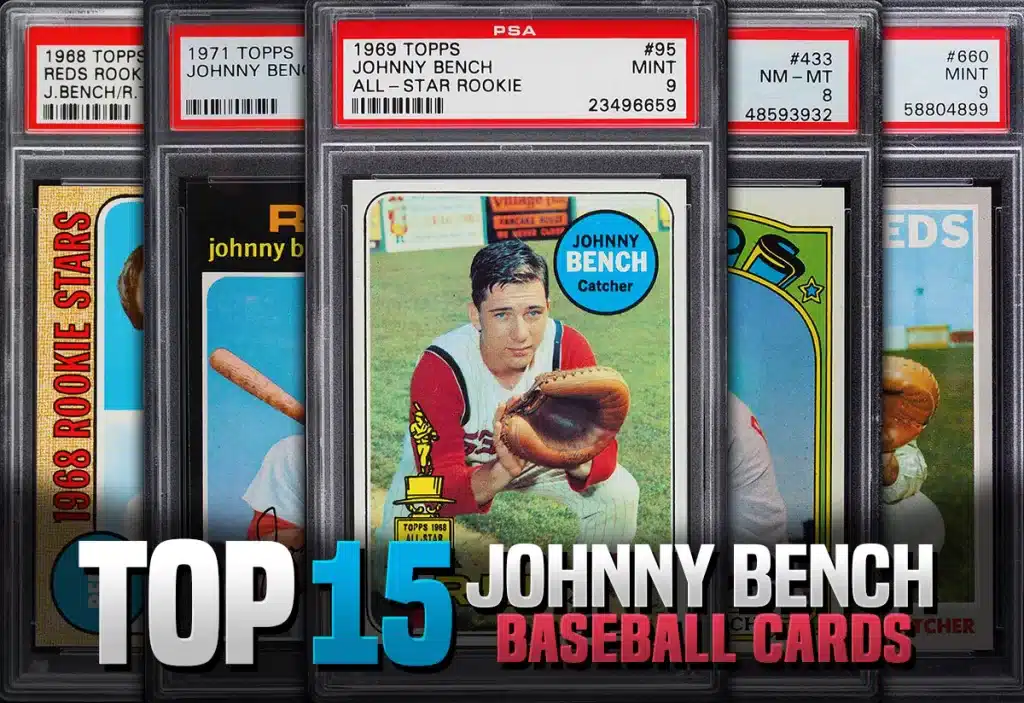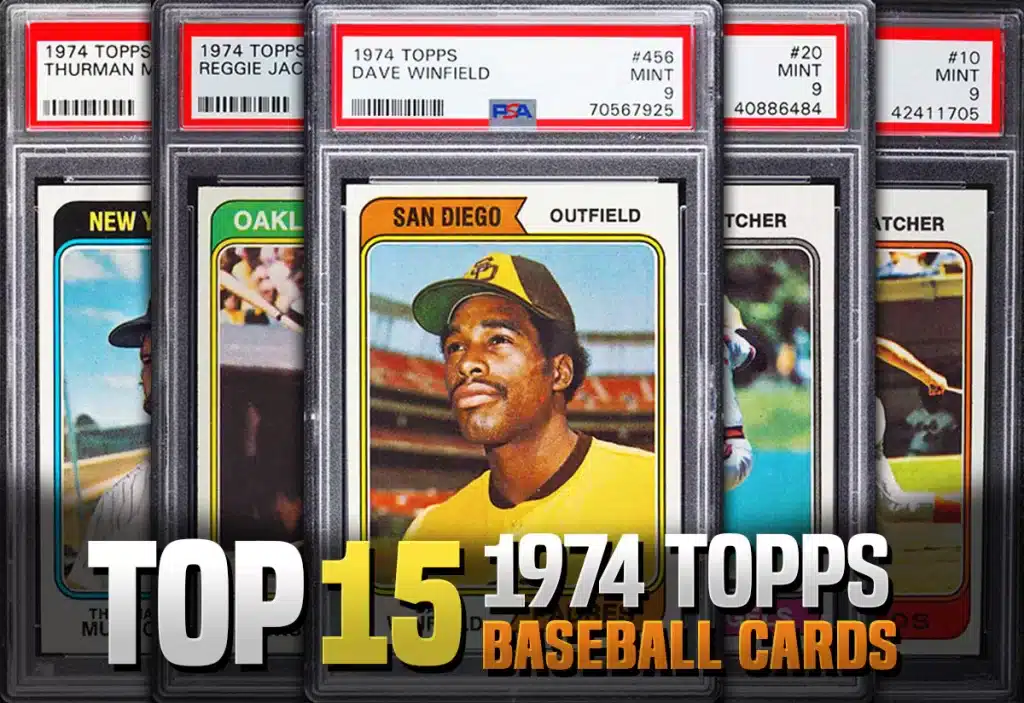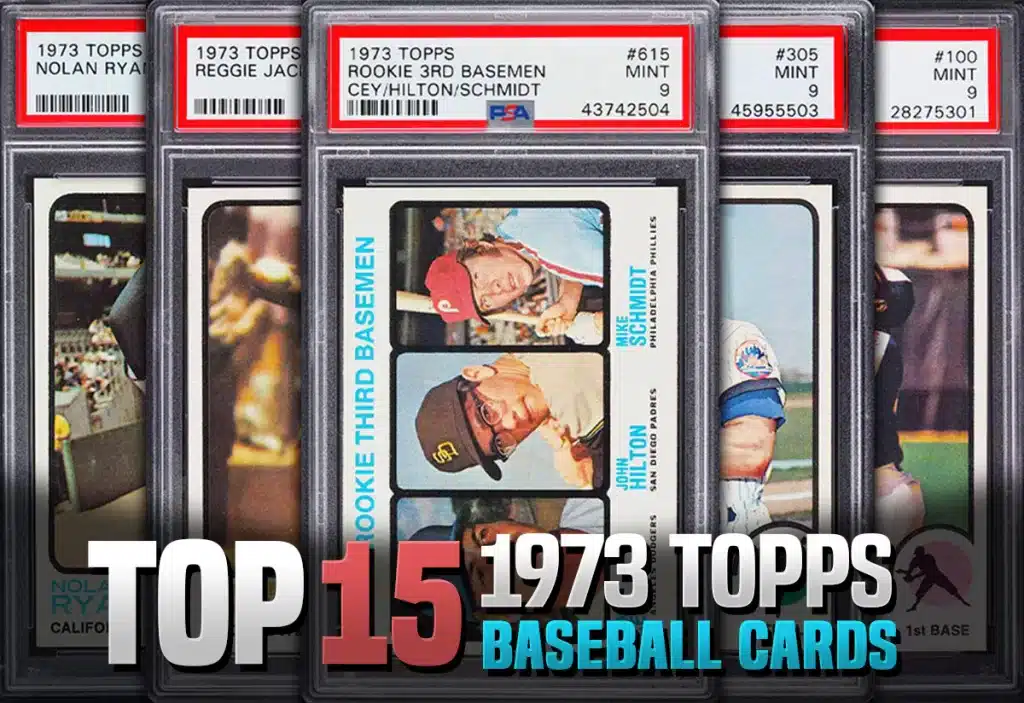How to grade sports cards
Each hobby has its grading terminology, including stamps, coins, comic books, and record collectors. Sports card collectors are no exception. The one invariable criteria for determining the value of a card is the condition that it’s in. Condition grading, however, is subjective. Individual card dealers and collectors differ in the strictness of their grading, but the stated condition of a card should be determined without regard to whether it is being purchased or sold.
No allowance is made for age
For the most part, vintage cards are graded the same as modern-day cards. For example, a 1970 Topps card is judged by the same standards as a 2017 Panini card. But some specific sets and cards are condition sensitive due to their border color, consistently poor centering, print defects, etc. Such cards and sets are often listed at higher prices when in mint condition.
Eye Appeal
When browsing vintage-graded cards online, you’ll notice that the same card with the same grade is sold at different prices. I’m referring to the cards sold in the same year, not years apart. We all know values go up and down yearly, but I’m referring to something entirely different with eye appeal. Look at the Ted Williams cards below, for example.
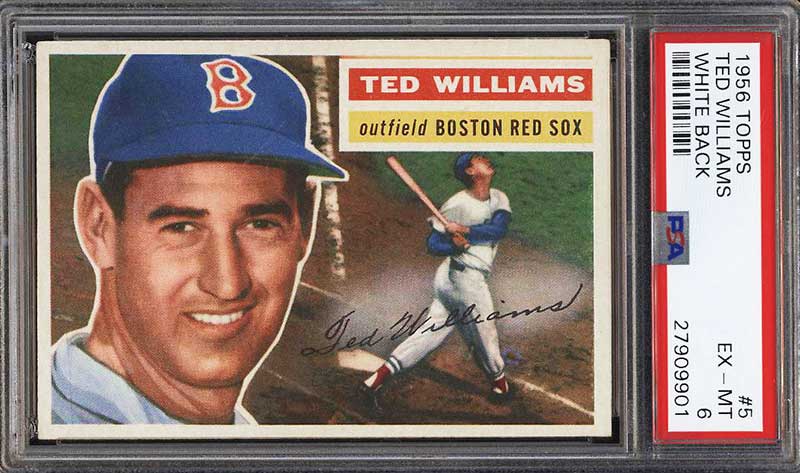

Collectors pay more for centered cards
On 9/11/2018, both Ted Williams 1956 Topps graded PSA 6 sold at auction. The Williams on the left sold for $475, while the Williams on the right sold for $288.89. Why such a price difference?
You’ll notice a slight off-centering on the right image if you click on the two Ted Williams graded cards above. The left border looks noticeably skinnier than the right border, therefore it sold for $186.11 less than the more centered Ted Williams pictured on the left.
Centering
Current centering terminology uses numbers representing the percentage of a border on either side of the main design. Centering is not a grading factor for borderless cards, such as early Stadium Club cards.
Slightly Off-Center (60/40)
A slightly off-center card is one that, upon close inspection, is found to have one border bigger than the opposite border. Slightly off-center cards are noticeable. It has good centering if you have to look longer than 2 – 3 seconds to tell if a border is even.
Off-Center (70/30)
An off-center card has one border that is noticeably more than twice as wide as the opposite border. An off-center bordered card still has value in the high-end cards. For lower-end cards, not so much.
Badly Off-Center (80/20)
A badly off-center card has virtually no border on one side of the card and a super thick border on the other. A badly off-center card loses a large chunk of value to it.
Miscut
A miscut card will show a part of the adjacent card in its larger border and a missing border on the other. Miscut cards are found more in older cards pre 1980’s.
Corner Wear
Corner wear can make or break a card. It is one of the most scrutinized grading criteria in the hobby. Here are the major categories of corner wear.
Corner with a slight touch of wear
A sharp corner but with minor evidence of wear. You may have to pull out your jeweler’s loupe to find it, but it’s there.
Fuzzy corner
The corner still comes to a point, but the pint has just begun to fray. A slightly “dinged” corner is the same as a fuzzy corner.
Slightly rounded corner
The fraying of the corner has increased to where there is only a hint of a point. Mild layering may be evident. A “dinged” corner is the same as a slightly rounded corner.
Rounded corner
The point is completely gone. Some layering is noticeable.
Badly rounded corner
The corner is completely round and rough. Severe layering is evident.
Creases
A third grading common defect in vintage cards is creasing. The degree of creasing in a card is difficult to show in a drawing or picture. The seller should note any crease on giving the specific condition of a high-end card for sale. The crease can be categorized accordingly to the scale below.
Light Crease
A light crease is a crease that is barely noticeable upon close inspection. A light crease may not be seen when cards are in penny sleeves and top loaders (until the card is taken out of the holder). A light crease on the front is much more serious than a light crease on the back.
Medium Crease
A medium crease is noticeable when held and studied at arm’s length by the naked eye but does not overly detract from the card’s appearance. It is an obvious crease, but not one that breaks the picture surface of the card.
Heavy Crease
A heavy crease has torn or broken through the card’s picture surface. The photo surface is torn, there is evident cardstock showing, and multiple lines are coming from the crease.
Alterations
Deceptive trimming
Deceptive trimming is when someone alters a card to shave off edge wear, improve the sharpness of the corners or improve centering. Their objective is to falsely increase the perceived value of the card to unsuspecting buyers. There is evident shrinkage compared to a similar full-sized card or if the trimmed card is measured.
Obvious trimming
Obvious trimming is noticeable and unfortunate. It is usually performed by non-collectors who do not consider their cards’ present or future value. Cards that have been trimmed tend to be far too skinny vertically or horizontally.
Deceptive retouched borders
This occurs when the borders on cards are touched up with a sharpie or magic markers to appear in better condition. You’ll find this more common on non-glossy, dark-bordered cards.
Deceptive retouched borders
This occurs when the borders on cards are touched up with a sharpie or magic markers to appear in better condition. You’ll find this more common on non-glossy, dark, bordered cards.
Condition Guide
Mint (Mt)
A card with no flaws or wear. The card has four perfect corners, 55/45 or better centering from the top to the bottom and from left to right. The gloss is original, with smooth edges and original color borders. A mint card does not have print spots, color or focus imperfections.
The most widely used grades are listed below. In many circumstances, not every card will perfectly fit one of the definitions. Collectors and sellers use their best judgment, and grading cards is subjective.
Near Mint-Mint (NrMt-Mt)
An nm-mt card has one minor flaw. Any of the following would lower a mint card to a near mint-mint. 1.) One fuzzy corner or two to four corners with slight touches of wear, 70/30 to 60/40 centering, slightly rough edges, minor print spots or focus imperfections. The card must have the original gloss.
Excellent-Mint (ExMt)
A card with two or three fuzzy, but not rounded, corners and centering no worse than 80/20. The card may have a small amount of original gloss lost, rough edges, slightly discolored borders, minor print spots, and color or focus imperfections.
Excellent (Ex)
A card with four fuzzy but not rounded corners. Centering cannot be any worse than 80/20. The card may have a small amount of original gloss lost from the surface but no scuffing and moderate discoloration of borders. The card may have a few light creases.
Very Good (Vg)
Very good condition cards are cards that have been handled but not abused. They have slightly rounded corners with slight layering. Minimal notching on the edges and a significant amount of gloss lost from the surface but no scuffing. Borders have a moderate amount of discoloration, and there may be a few creases on the card.
Good (G), Fair (F), Poor (P)
A well-worn mishandled, or abused card. They have badly rounded and layered corners. Most of the original gloss is missing, and they have seriously discolored borders. Moderate to heavy creases and one or more serious flaws. The grade of good, fair, or poor depends on the severity of wear and flaws. Good, fair, and poor cards generally are used only as fillers.
From a young age, Matt dove deep into sports card valuation, turning to esteemed price guides like Beckett and Tuff Stuff. Eventually he extended to Pokémon, Magic: The Gathering, and Yu-Gi-Oh!. With a vision to sustain and nurture the hobby he loved, Matt established the ‘Graded Card Investor’ YouTube channel and website. He aims to foster a healthy community and offer invaluable insights to those entering the world of sports cards and TCGs. His depth of understanding, from the card market’s 2020 pinnacle to its 1990s valleys, is consistently fortified by meticulous research.
